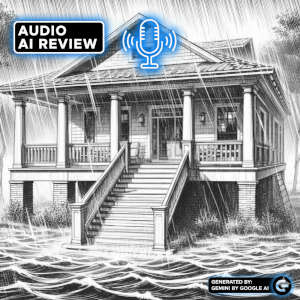The eligibility for DUA is determined by the state UI agency, which first checks if individuals qualify for regular UI benefits. If they are eligible for regular UI benefits, they will receive those instead of DUA.
The U.S. Department of Labor oversees the DUA program and collaborates with the Federal Emergency Management Agency (FEMA) within the Department of Homeland Security. The administration of DUA is carried out by state UI agencies acting as representatives of the Federal government whenever a disaster declaration, including DUA, is issued for "individual assistance."
A "Major Disaster" encompasses any significant natural or man-made catastrophe, such as hurricanes, tornadoes, earthquakes, floods, or other incidents like explosions or natural gas leaks. It leads to a Presidential declaration of a disaster. Such a declaration is issued when it's established that governmental aid is necessary for communities and individuals who have been directly impacted by the disaster. Disaster Unemployment Assistance (DUA) becomes accessible when the declaration includes provisions for individual assistance, including DUA.
Upon the request of a state Governor or Tribal Governor/Chief, the President has the authority to declare a major disaster in the state. This declaration specifies the areas impacted by the disaster and may grant authorization for Disaster Unemployment Assistance (DUA). Public announcements are issued in the disaster area to inform individuals about the availability of DUA, along with instructions on how and when to apply for benefits.
QUALIFYING FOR DUA
One of the following conditions of unemployment must have occurred as a direct result of the disaster to qualify for DUA:
- The individual has had a week of unemployment following the date the major disaster began;
- The individual is unable to reach his/her place of employment;
- The individual was scheduled to start work and the job no longer exists or the individual was unable to reach the job;
- The individual became the breadwinner or major support because the head of the household died as a direct result of the disaster; or
- The individual cannot work because of an injury caused as a direct result of the disaster.
ELIGIBILITY REQUIREMENTS
In order to be eligible for DUA, individuals who meet one of the qualifying conditions above must also meet all the following eligibility requirements:
- The individual is not eligible for regular UI;
- The individual is unemployed as a direct result of the disaster;
- The individual is able and available for work, unless injured as a direct result of the disaster;
- The individual filed an application for DUA within 30 days of the date of the public announcement of the availability of DUA; and
- The individual has not refused an offer of employment in a suitable position.
To file a claim, individuals who are unemployed as a direct result of the disaster should contact their State Unemployment Insurance agency.
Applications for DUA must be filed within 30 days of the announcement of the availability of DUA in the state. Individuals must follow the instructions in the announcement and file for DUA based on the filing method used by their state UI agency (i.e., in-person, mail, telephone, or internet).
The individual must continue to file weekly or biweekly claims for DUA benefits according to the instructions given by the state agency where the DUA application is filed.
The individual will need to provide proof (e.g., income tax return, bank statements) to document employment or self-employment or to document work that was to begin on or after the date of the disaster. If proof of employment cannot be provided at the time the claim is filed, individuals have 21 calendar days from the time the claim was filed to meet this requirement. Failure to submit this documentation within the 21 days will result in a denial of DUA, and any benefits already paid will be considered overpaid. Individuals are required to repay any benefits overpaid.
The weekly benefit amount (WBA) will be based on the gross wages of the individual. If the individual is self-employed, the weekly benefit amount will be based on the net earnings (income) from self-employment. Generally, benefits are calculated using the same formula used for state UI benefits; however, if the individual qualifies for less than 50 percent of the state average UI WBA, the WBA will be increased to 50 percent of the state’s average WBA, with certain exceptions for part-time workers.
DUA benefits are generally paid for up to 26 weeks, beginning with the first week following the date the major disaster began, and ending with the 26th week following the date the major disaster is declared by the President.
FEMA provides the funding for DUA benefit payments and the costs for states to administer the program. DUA payments are made by state UI agencies to eligible individuals unemployed as a direct result of the disaster.
Sections 410 and 423, Robert T. Stafford Disaster Relief and Emergency Assistance Act (Stafford Act) (42 USC 5177); Title 20, Chapter V, Part 625, Code of Federal Regulations (20 CFR Part 625), as amended.

